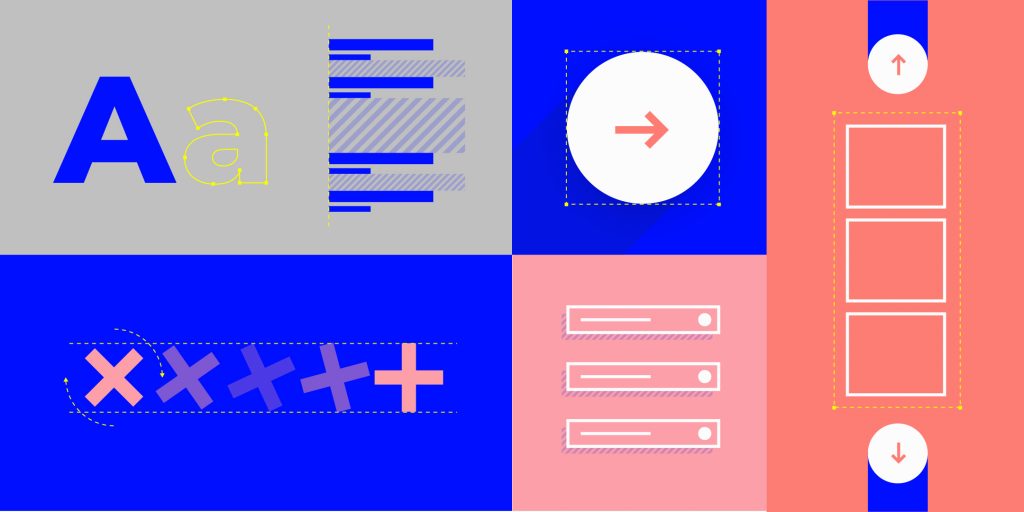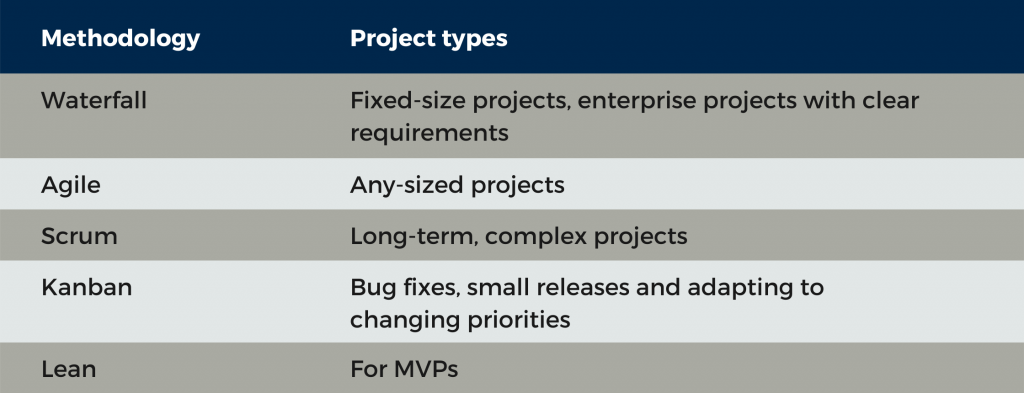Minimizing software development costs is always on a startup’s radar. Among all lean startup management tricks, starting with a minimum viable product instead of a full-featured solution is one of the most effective. Building an MVP is not only done in the name of the economy; it also helps to test your idea, attract your first paying customers, and maximize the chances of your business’ success.
More about the pros and cons of developing an MVP in our blog post: Everything You Always Wanted to Know about MVP Development
In this article, we review the most usable practices to help you reduce the cost of MVP development so that you can use more resources to fuel your business growth.
What comprises the costs of software development?
Before we proceed to the main question, let’s review the factors that affect the cost of development.
Features
The feature set comprises the value and cost of your product. The quantity and complexity of your app’s functionality affect both the price of development and time-to-market.
Solutions based on a standard, widely used feature set can be done with minimum resources, while innovative products can require quite a lot of R&D effort.
The key idea behind an MVP is to launch a product with minimal functionality to attract first users and get feedback. The more complex your MVP, the higher the software development cost.
However, we encourage you not to mistake an MVP with a prototype. It should deliver value to your users—not just show them how useful it will be as soon as you finish developing it.

Design
The “face” in “interface” is not a coincidence. UI/UX design defines the way your user communicates with your solution. It influences engagement and the probability that users will return to you again.
The interface design adds to the cost of your MVP. The more screens, interactive elements, and illustrations it has, the costlier it becomes. The price is even higher if you use such technologies such as AR, 3D modeling, or motion design.
Platforms and integrations
Before proceeding to the development, you need to define the platforms your solution will run on.
You can create a responsive web application so that your users can open your app in a browser on any device, or you can build separate solutions for web and smartphones.
If you plan to focus on mobile, you need to decide whether you want to run on iOS, Android, or both. If you choose both of these platforms, you also need to decide whether you want to build two native apps or one cross-platform app.
The more separate apps for various platforms you have, the higher the price of software engineering.
The cost also depends on how many external integrations (for example, maps or payment systems) and internal integrations (like CRM) your app will have.
Innovativeness
Yep, innovations are costly.
If you’re building a marketplace or a taxi app, you can use thousands of open-source solutions polished by programmers from all over the world.
But, if your product has no analogs, get ready to pay more, since you’ll be developing it from scratch.
Team
In most cases, you can’t do everything alone, so you’ll have to hire the right team. Choosing between juniors and seniors, in-house specialists, and outsourced providers can affect the cost a lot.
This is not only about salaries. Your team can also affect other significant factors, such as time-to-market. It may seem that a larger team will help you launch faster, but the reality is a little bit different. If your crew is too big, communication and management become a challenge. As a result, your development takes longer and becomes much more expensive.
You can get some tips about how to put together an optimal team in our article here.

How to minimize MVP development costs
Now that you know what comprises the cost of development, we can proceed to minimize it.
1. Start with core features
When your resources are limited, it’s vital to determine which features are must-haves for your project and which are fun-to-haves.
Must-have features are the ones your app can’t exist without. They deliver true value to your users. Others are those that enhance user experience. You can add them later.
For example, for an e-commerce app, finding goods and paying for them is its core functionality. A recommendation engine is nice to have, but you can launch without it.
Bad prioritization can result in excessive development costs and longer time-to-market due to the implementation of more features than you need at first.
Customer development is one of the most effective methods for choosing the right features for your MVP. Define who your target clients are, what problem they have, and how you can solve it.
Based on that research, you can mark each of your features as critical, moderate, or optional and implement them in the right order.
2. Leverage design systems

The design of your app is important—very important. Since it defines whether your clients will continue using your app, it’s not something you should skimp on, but you still can streamline the process by implementing design systems.
Design systems are the collections of code snippets, UI elements, and style guides that you can use to build your own solution. By applying them, you can shorten the development time and improve the quality of your product simultaneously.
Here are a few most popular design systems you can refer to:
1. Google Material Design System
2. Apple Human Interface Guidelines
3. Microsoft Fluent Design System
3. Involve testers early
We discuss a similar issue in our article about prototyping.
The closer you get to release, the costlier errors become. If you start testing two days before launch, you boost the risk of finding critical issues too late to fix. And, even if you manage to fix the issue, there’s a high chance doing so will cause millions of others – just like the good ole’ programmer jokes suggest.
One of the best practices is to involve QA specialists when developing business requirements. They can detect conflicting requirements and save your development team from many long hours rewriting the code from the scratch.
We also recommend engaging a QA specialist during the UI/UX design, backend & frontend development, and release stages. This is how we achieve the greatest quality in our products.
4. Choose cross-platform development
Just a few years ago building a hybrid app development was a true compromise. The cost of development dropped twice, but so did the quality. Today cross-platform development tools, such as React Native, Xamarin, Flutter, are much more sophisticated and allow building apps that run smoothly on any platform.
Creating a hybrid app also helps you cut down maintenance costs since you need to update only one codebase when you want to make changes to your solution.
5. Use popular programming languages and open-source solutions
It's always faster to implement ready-to-use functional components than to write a whole feature from scratch. Open-source solutions save you a large amount of time and money. And, even more importantly, they can enhance the quality of your product. Since open-source products are developed collaboratively by many specialists from all over the world, they are often optimized and bug-free.
If your project is built on a popular language such as JavaScript, Python, or PHP, there’s a greater chance of finding a useful open-source solution to apply. Such languages have large communities built around them. They develop and share frameworks and libraries that make life much easier.
Last but not least, if many people use a technology, you can ask them about any development issues and get solutions more quickly.
6. Wise management
Yes, management plays a huge role in the development process (and in the development budget). Without the right leadership, even a successful idea can get buried in a chaotic realization.
Below are a few management tips that will help you turn your team into a well-tuned machine.
1. Choose the right methodology
There are dozens of development methodologies. The topic is certainly worth an article. We'll create it soon. We promise 🙂
The most widely-used are Agile, Lean, and Waterfall.
- Agile stands for adaptability and flexibility. It aims to provide better responsiveness to ever-changing business environments and focuses on delivering workable increments.
It also has 2 very popular frameworks: Scrum and Kanban. - The Waterfall model is a linear project management approach, where all the project requirements are gathered at the beginning and used to build a sequential project plan. Its name refers to the idea that each phase of the project cascades into another.
- Put simply, the Lean methodology is about creating more value for customers with fewer resources.
If we compare these three methodologies, Waterfall may be the cheapest, but it usually leads to increased time-to-market. Agile and Lean approaches can help you reach faster ROI.
The methodology you choose to use depends on your project type.

2. Set clear and comprehensive tasks
To optimize your spending, it is crucial to ensure that each and every member of your team understands what they’re doing and why. Otherwise, you risk spending long hours on something you don't truly need.
Here's some advice on how to do this:
- Develop a product vision statement
Provide your crew with the big picture of what they’re creating. Explain your business idea, describe your target audience, and identify the problems that your product addresses.
- Create a business model
This should include your product’s UVP, key revenue streams, metrics for evaluating project success, and sales and marketing channels.
- Establish goals and measure results
Your team should understand what you expect from them and from the final product. They should know what metrics they need to reach for their work to be done well.
- Define tasks and acceptance criteria
To ensure 100% clarity, your whole team should agree on definition of ready (DoR), definition of done (DoD), and acceptance criteria for each task.
Check out a related article:
Prioritize It: 11 Methods to Select Features for Your MVP
7. Outsource development
Yep, this article wouldn’t be complete without addressing outsourcing.
One of the major advantages of outsourcing is that it helps cut costs for hiring in-house specialists and renting larger offices. The whole business model is based on this idea and is still very effective.
However, outsourcing is not only about costs.
Modern outsourcing companies have shifted their focus to delivering expertise, not just a cheap workforce. For over a decade, such businesses have launched hundreds of different products. When you hire an outsourcing company, you also get access to deep industry expertise and to many years of experience helping to build startups like yours. So, if you need advice on how to optimize your MVP development process, contact us. We are here to help!
Leave a Comment